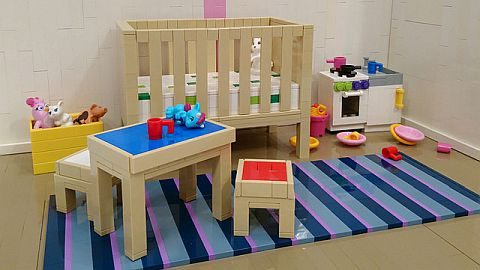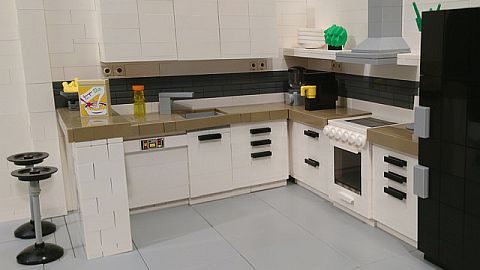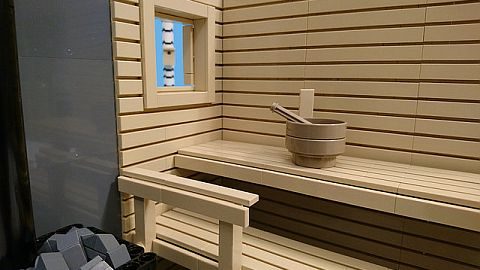Building realistic exterior and interior designs is a favorite hoppy of many LEGO fans. Making an authentic replica of your home, a prominent structure of your city, or some other building that you really like can be an interesting and rewarding challenge. One thing to keep in mind is that if your goal is realism, it’s best to step away from standard minifig-scale. While minifigs are cute, their scale and everything built to their scale are nowhere near realistic. Instead, it’s best to start with recreating a prominent feature of the structure you are modeling and scale everything from there.

Freeing yourself from the constrictions and imperfections of minifig-scale can result in some stunningly lifelike models. To give you some examples, I thought to show you some of the work of one of my favorite LEGO interior designers Heikki M. Take a look at the attic apartment with the fireplace above. It looks so real, isn’t it? But everything you see here is made of standard LEGO elements. Notice the impressive masonry works on the back wall!



Here are a few other tastefully designed interior spaces with cleverly repurposed LEGO elements. Notice that even the view from the windows is brick-built, using forced-perspective techniques. The only thing not LEGO in these pictures is the zebra painting.




To find a use for brighter colors and cute LEGO animals, Heikki also build a children’s room with lots of toys and even added child-size toy kitchen appliances.

Speaking of kitchens, here is a full-size kitchen with a bar table and two seats, an induction stove, and lots of cabinets. The black refrigerator and cabinet handles give a nice counterbalance to the lighter-colored surfaces.

Heikki is Finnish, and a sauna is a sacred place for the Finns. He explains that in the heat of the sauna you can completely relax, and share your thoughts with your family and friends. He also mentions that the best place for a sauna is by a lake, so you can jump into the cool water after taking a hot sauna bath.

Another great interior space is this home theatre. The screen is constructed with lots of black pieces, and the stars are represented with translucent-clear round plates. As you can see, the seats work perfectly for the old LEGO Technic figures.

To give you a better idea of the size and scale of these models, here is a behind-the-scenes peek at the living room. If you want to put your models on permanent display, you want to finish the edges, but if you are just taking photographs, you can get away with only finishing parts of the model that will be in the picture. The wires you see are for lighting up the fireplace.

If you would like to build your own interior designs and are inspired by Heikki’s creations, I recommend checking out his Flickr gallery for more. What do you think? Have you ever tried to recreate the interior or exterior of a real-life structure? How did it go? Did you run into any challenges? Is anything interesting that you learned in the process? Feel free to share and discuss in the comment section below!
And you might also like to check out the following related posts:















